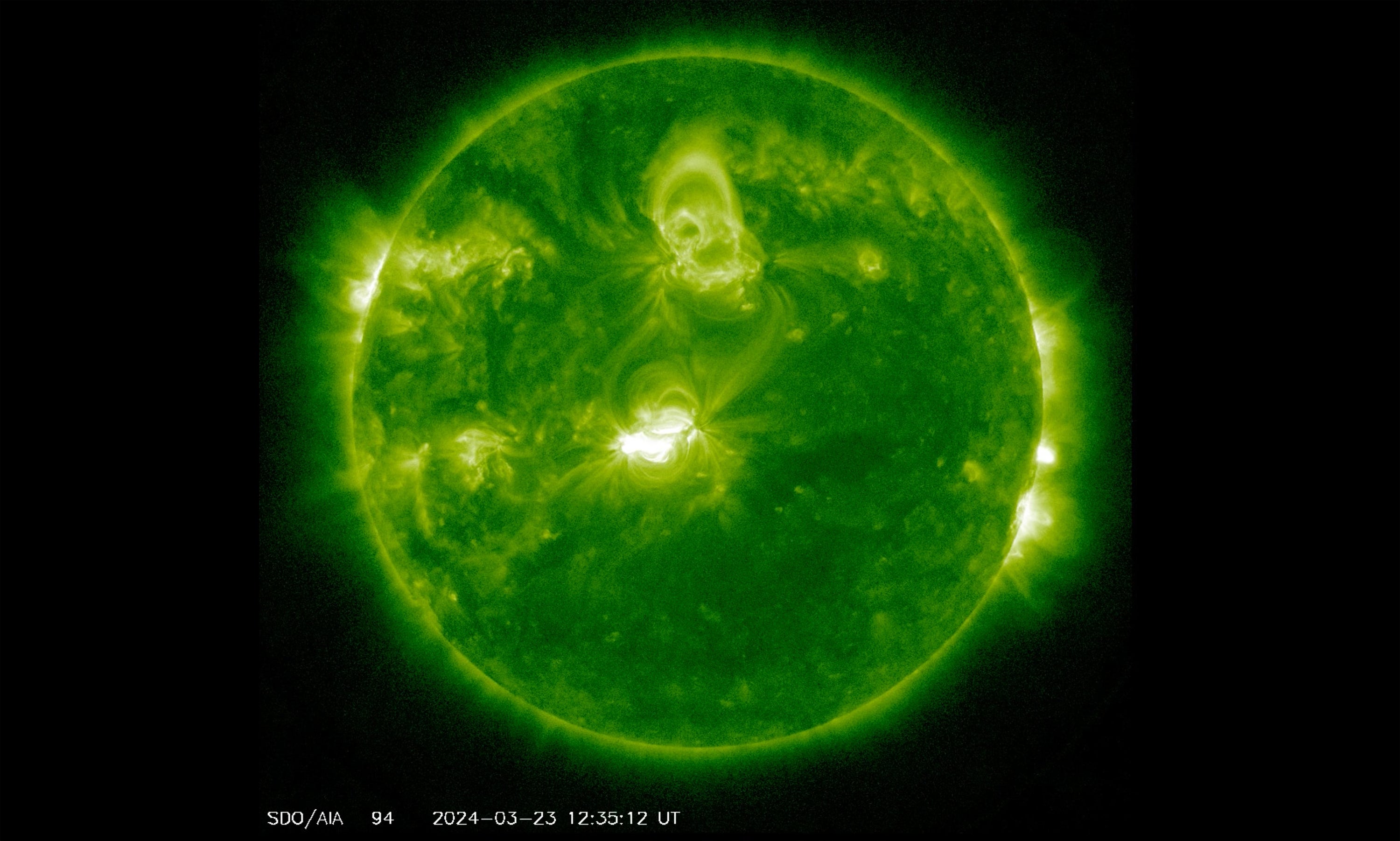Huge solar storm could disrupt communications and bring northern lights to the sky
Space weather forecasters have issued a geomagnetic storm watch through Monday

A huge solar storm could disrupt communications and send lights across the sky, space weather forecasters say.
The geomagnetic storm, caused by an outburst of plasma from a solar flare, could interfere with radio transmissions on Earth as well as causing potential problems for satellites and humans in space. It might also mean that the northern lights are visible at higher latitudes, such as the north part of the Americas and even the UK.
Scientists have repeatedly warned that the coming busy period for the Sun could put important communications at risk and that the world may need to do more to prepare.
But there is no reason for the public to be concerned about this storm, according to the alert issued Saturday by NOAA's Space Weather Prediction Center in Boulder, Colorado.
The storm could interrupt high-frequency radio transmissions, such as by aircraft trying to communicate with distant traffic control towers. Most commercial aircraft can use satellite transmission as backup, said Jonathan Lash, a forecaster at the center.
Satellite operators might have trouble tracking their spacecraft, and power grids could also see some “induced current” in their lines, though nothing they can't handle, he said.
“For the general public, if you have clear skies at night and you are at higher latitudes, this would be a great opportunity to see the skies light up,” Lash said.
Every 11 years, the sun's magnetic field flips, meaning its north and south poles switch positions. Solar activity changes during that cycle, and it's now near its most active, called the solar maximum.
During such times, geomagnetic storms of the type that arrived Sunday can hit Earth a few times a year, Lash said. During solar minimum, a few years may pass between storms.
In December, the biggest solar flare in years disrupted radio communications.
Additional reporting by agencies
Bookmark popover
Removed from bookmarks